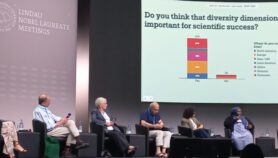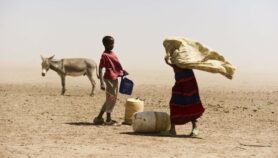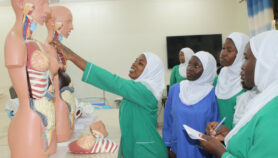By: Masembe Tambwe
Send to a friend
The details you provide on this page will not be used to send unsolicited email, and will not be sold to a 3rd party. See privacy policy.
[DAR ES SALAAM] The East African hub of the ambitious, pan-African Nelson Mandela African Institute of Science and Technology (NM-AIST) appears set for completion later this year after further funding was secured.
But the project urgently needs to secure private sector involvement, according to an analyst of Tanzanian science.
"The money for the current face-lift of the Tengeru campus is available for timely completion of the project," said Burton Mwamila, vice chancellor of the institute.
The money has been borrowed from various Tanzanian social security and pension funds, with construction at the 200-acre site in Arusha costing about US$2.6 million, Mwamila told SciDev.Net.
He said NM-AIST Arusha expects to register its first students next month (February) but the maiden academic year will start after June 2011 when construction is completed.
"Visiting professors and lecturers from the United States, South Korea, India and other countries will work with resident faculty to deliver lectures and supervise research at MSc and PhD levels, enabling our teaching, research and innovation environment to achieve world-class standards," Mwamila said.
The institute, which is owned by the Tanzanian government, will also have a second campus in Karangai, 12 kilometres away.
NM-AIST is a network of pan-African Sub-Saharan science and technology institutions that has the main objective of developing the next generation of African scientists and engineers.
It is the idea of senior African, mostly diaspora scientists, and is modelled on the Indian Institutes of Technology, a network of higher education colleges in India.
The first of five regional institutes was launched in the Nigerian capital of Abuja in 2007 with backing from the World Bank. It has several hundred students, with the first Master’s degrees awarded in December 2009.
Construction of the other hubs seemed to stall, but regained some momentum in 2009 with the appointment of top management staff and the dedication of land for the second campus in Arusha.
Peter Tindemans, director of the Netherlands-based consultancy firm Global Knowledge Strategies and Partnerships, who did a feasibility study for the institute in February 2006, welcomed the news but called for private sector involvement as early as possible.
After completing the World Bank-commissioned feasibility study, he told SciDev.Net, he raised concerns about whether Tanzania could, on its own, raise the US$2 billion necessary for the construction.
Tindemans also said that an institute whose aim is to achieve the standards comparable with the Massachusetts Institute of Technology could create a damagingly wide gap between itself and other technical institutions in Tanzania, which should be provided with more means to improve too.
The International Institute for Water and Environmental Engineering (2iE) in Ouagadougou, Burkina Faso, has been admitted into the NM-AIST network as a third institution, with more than 1,000 students.













